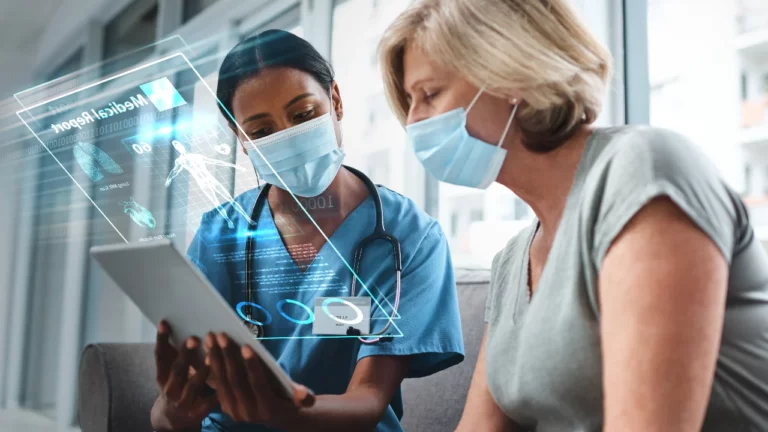In the landscape of modern healthcare, remote patient monitoring (RPM) services have emerged as a valuable tool for managing chronic conditions, enhancing patient engagement, and optimizing healthcare delivery. However, alongside the benefits RPM offers, healthcare providers must navigate a complex terrain of documentation requirements to support billing claims effectively.
Thorough and accurate documentation not only facilitates reimbursement but also serves as a cornerstone for demonstrating the medical necessity of RPM services and ensuring continuity of care for patients.
Patient Consent
Before initiating any RPM services, obtaining explicit patient consent is paramount. This consent should outline the scope of monitoring, the types of data collected, how it will be used, and the potential benefits and risks involved. Documenting this consent ensures transparency and compliance with regulatory requirements. It also serves as evidence of patient engagement and willingness to participate in their care, which can be vital in justifying the medical necessity of RPM services during audits or reviews.
Obtaining patient consent for RPM services
- Scope of monitoring: Clearly define what aspects of the patient’s health will be monitored remotely, such as vital signs, symptoms, or medication adherence.
- Types of data collected: Specify the specific data points that will be gathered during monitoring, such as blood pressure readings, glucose levels, or activity levels.
- Data usage and storage policies: Inform patients about how their data will be used, who will have access to it, and how it will be stored securely to protect their privacy.
- Potential benefits and risks: Discuss the potential benefits of RPM, such as early detection of health issues and improved management of chronic conditions, as well as any potential risks or limitations, such as technical issues or data breaches.
Importance of documenting consent
- Ensures transparency and compliance: By documenting patient consent, healthcare providers demonstrate their commitment to transparency and compliance with regulatory requirements, such as HIPAA.
- Provides evidence of patient engagement: Written consent serves as tangible evidence that patients have been informed about the nature of RPM services and have actively agreed to participate in their care, which can be crucial in demonstrating the medical necessity of these services.
- Vital for justifying medical necessity during audits or reviews: In the event of audits or reviews, documented consent provides a clear record of patient involvement in RPM services, helping to justify the medical necessity of these services and supporting billing claims.
Ensuring Security and Privacy in RPM Services
Adherence to data protection regulations
Healthcare providers must adhere to stringent data protection regulations, such as the Health Insurance Portability and Accountability Act (HIPAA), to safeguard patient confidentiality. HIPAA sets forth standards for the protection of sensitive patient health information, including requirements for the secure transmission, storage, and access control of electronic health records (EHRs). Compliance with HIPAA regulations is essential to maintaining patient trust and upholding ethical standards in healthcare delivery.
Documenting compliance measures
Documenting compliance measures is crucial for demonstrating a commitment to protecting patient information and mitigating privacy risks associated with remote monitoring technologies. Key steps include:
- Encryption protocols: Implement robust encryption protocols to secure data transmission and storage.
- Access controls: Ensure that only authorized individuals have access to patient information through access controls. Utilize user authentication mechanisms to verify the identity of individuals accessing sensitive data.
- Data breach response plans: Establish comprehensive data breach response plans to swiftly address and contain any security incidents. Regularly update and test these plans to ensure effectiveness in the event of a breach.
Demonstrating commitment to patient information security
By documenting compliance measures, healthcare providers can demonstrate their commitment to safeguarding patient confidentiality and privacy. This not only helps to build trust with patients but also enhances the reputation and credibility of healthcare organizations. In an era of increasing cybersecurity threats and data breaches, proactive measures to protect patient information are essential for maintaining compliance with regulatory requirements and mitigating the potential financial and reputational consequences of security incidents.
Documentation Integrity and Audits
Maintaining the integrity of documentation is crucial for compliance and reimbursement integrity. Healthcare providers should adopt standardized documentation practices and implement quality assurance processes to ensure accuracy and consistency. Regular audits of documentation practices can help identify any discrepancies or deficiencies and provide opportunities for corrective action and staff training. By proactively addressing documentation issues, providers can mitigate compliance risks and maintain the trust and credibility of their billing claims.
Importance of Time Tracking in RPM Billing
- Demonstrating duration and intensity: Accurate time tracking provides evidence of the duration and intensity of monitoring activities, showcasing the level of care provided to patients.
- Justifying reimbursement: Documenting time spent on various activities related to RPM services, such as reviewing patient data and communicating with patients or caregivers, is crucial for justifying reimbursement claims.
- Maintaining detailed time logs: Healthcare providers should maintain detailed time logs that capture each instance of interaction or intervention related to RPM services, ensuring transparency and accuracy in billing practices.
- Supporting billing claims: Time logs serve as supporting documentation for billing claims, providing a clear record of the time invested in delivering RPM services to patients.
- Assessing efficiency: Time tracking enables providers to assess the efficiency of their monitoring protocols and identify areas for improvement, ultimately enhancing patient outcomes and satisfaction.
The Significance of Comprehensive Clinical Documentation
Capturing key patient information
- Medical history: Documenting a patient’s medical history provides valuable insights into their overall health status, previous illnesses, and any underlying conditions that may impact their current health.
- Current symptoms: Recording the patient’s current symptoms allows healthcare providers to assess their condition accurately and determine appropriate treatment plans.
- Treatment plans: Clinical notes should outline the patient’s current treatment regimen, including medications, therapies, and interventions prescribed by healthcare professionals.
Utilizing clinical notes for informed decision-making
- Observations and findings from remote monitoring data: Integrating observations and findings derived from remote monitoring data into clinical notes enhances the depth and accuracy of patient assessments.
- Contextualizing monitored parameters: Clinical notes provide context to the monitored parameters, helping healthcare providers understand the significance of changes in vital signs or other health metrics.
- Enabling informed decisions about patient care: By synthesizing patient information and monitoring data, healthcare providers can make informed decisions about treatment adjustments, medication changes, or further diagnostic testing.
Facilitating continuity of care and collaboration
- Maintaining a historical record of patient progress: Clinical notes serve as a comprehensive record of the patient’s progress over time, documenting changes in their health status, responses to treatment, and outcomes of care.
- Ensuring continuity of care: Access to detailed clinical documentation ensures continuity of care as patients transition between healthcare settings or interact with different providers within the same healthcare system.
- Supporting collaboration among multidisciplinary care teams: Comprehensive clinical documentation facilitates communication and collaboration among members of multidisciplinary care teams, ensuring coordinated and holistic care for patients with complex medical needs.
Streamlining Workflow Efficiency with the DrKumo RPM Solution
Incorporating the DrKumo RPM Solution into your medical billing workflow not only enhances efficiency but also simplifies the documentation process for Remote Patient Monitoring (RPM) services. From capturing patient consent to logging time spent on monitoring activities, DrKumo offers comprehensive tools to ensure compliance and streamline billing practices.
Seamless integration with the DrKumo RPM solution
Enhancing efficiency: The DrKumo RPM Solution streamlines the documentation process, allowing healthcare providers to focus more on patient care and less on administrative tasks.
Simplifying documentation: From capturing patient consent to logging monitoring activities, DrKumo offers intuitive tools that simplify documentation for RPM services, ensuring accuracy and compliance.
Comprehensive compliance tools: DrKumo provides comprehensive tools to ensure compliance with regulatory requirements, reducing the risk of errors and potential compliance issues.
Revolutionize Your Workflow with the DrKumo RPM Solution
Efficiency enhancement: Discover how the DrKumo RPM Solution can revolutionize your medical billing workflow, enhancing efficiency and productivity.
Streamlining documentation processes: Take control of compliance and efficiency with DrKumo’s streamlined documentation processes for RPM services, enabling seamless integration into your workflow.
Takeaways
Thorough and accurate documentation is essential for supporting RPM billing claims, demonstrating the medical necessity of services, and ensuring continuity of care for patients with chronic conditions. By adhering to documentation requirements, healthcare providers can navigate the complexities of RPM billing with confidence, while also delivering high-quality, patient-centered care in the evolving landscape of modern healthcare.
Experience the transformational power of the DrKumo RPM Solution in your medical billing workflow today. Unlock efficiency and compliance with DrKumo, contact us now!
Disclaimer: The information provided in this article is intended for informational purposes only and should not be construed as legal, medical, or financial advice. Healthcare providers and organizations should consult with appropriate professionals and regulatory authorities to ensure compliance with relevant laws, regulations, and guidelines governing Remote Patient Monitoring (RPM) services and medical billing practices.








